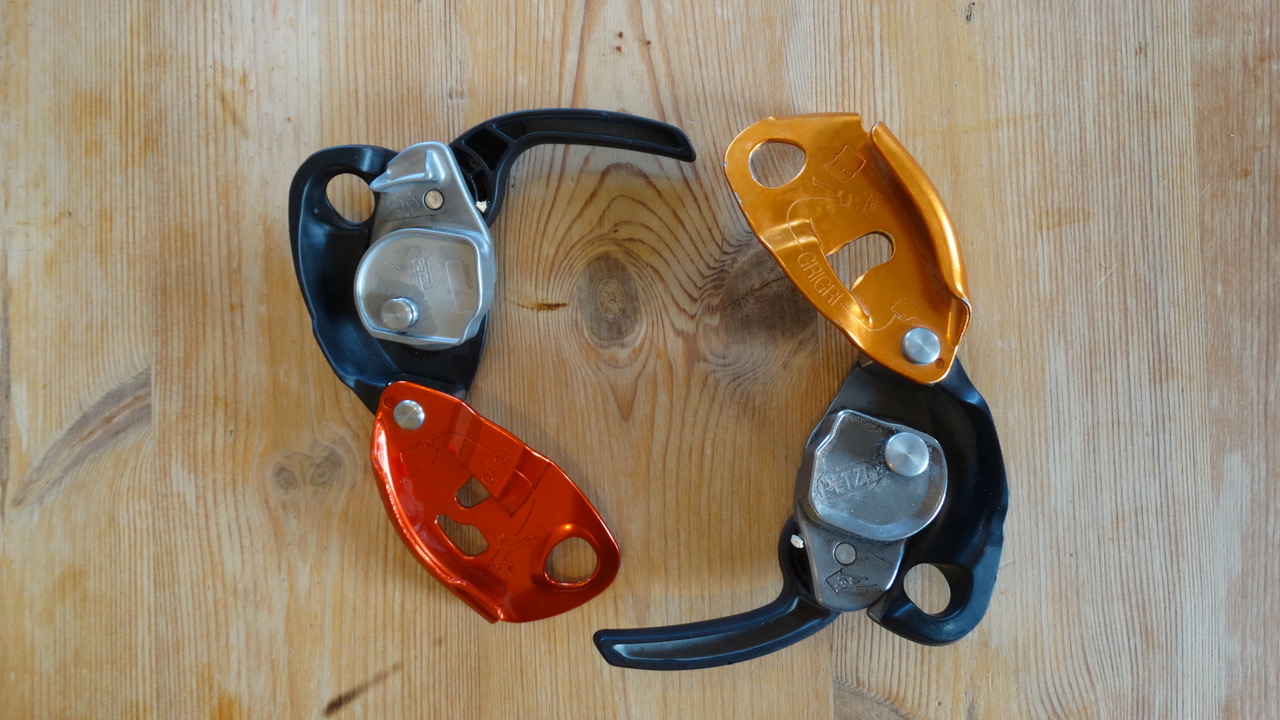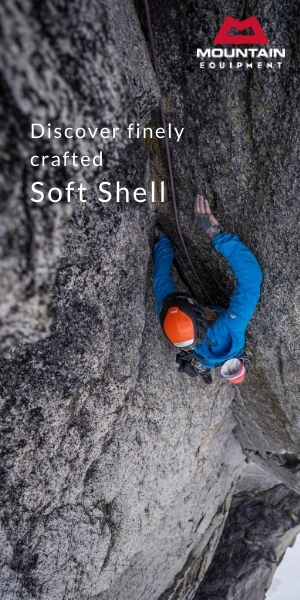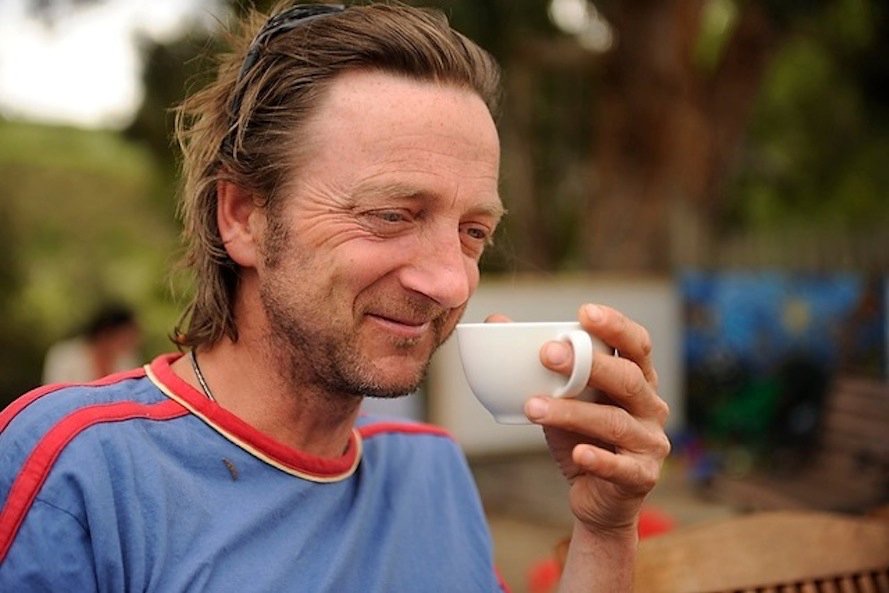Pete Edwards of Prowess Coaching compares the current Petzl GRIGRI model with the previous generation, and is surprised to see a few useful and subtle improvements. From Petzl themselves:
'The GRIGRI is a belay device with assisted braking (meaning it will help the belayer control the rope should the climber fall). Compact and lightweight, it can be used with single ropes from 8.5 to 11 mm. The assisted braking function makes belaying more convenient when holding a climber or catching a fall. The design of the handled camming mechanism enables exceptional descent control.'
Read Pete's thoughts on one of the most widely-used belay devices:
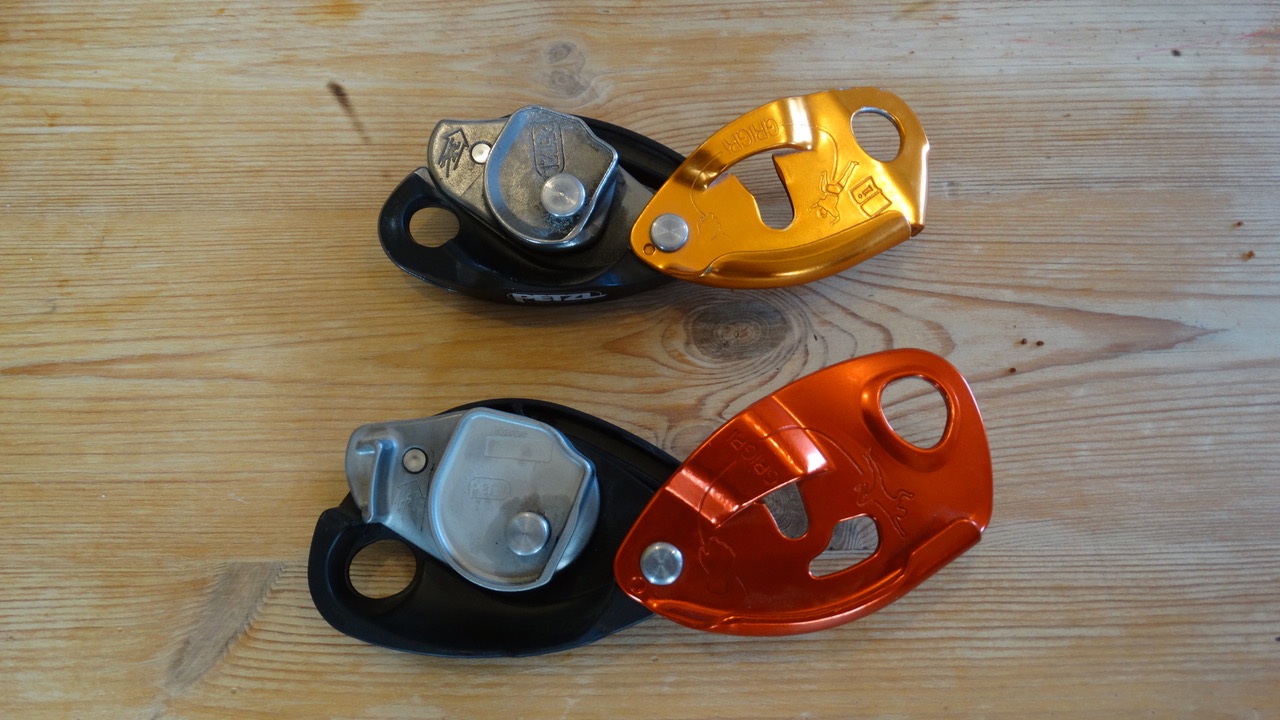
The current Petzl Grigri (red) next to the old model (orange). Spot the differences! Photo: Pete Edwards
I bought my first GRIGRI back around 2002, along with a 9.5mm rope (if memory serves). Straight from the shop, I went to a friend’s house and showed off my latest purchases, only for a more-experienced climber to tell me they weren’t compatible, as the original clearly states 10-11mm rope use. Despite the poor advice from the shop, I clearly wasn’t alone and by 2011 – twenty years after the release of the first incarnation – Petzl decided to do something about it and out came the upgrade; imaginatively named the GRIGRI 2 (All Petzl products are capitalised!)
It didn’t take as long for them to upgrade the base design again, though this time there was a twist, literally! On the back a dial can be found to change between top rope and lead mode. This extra feature, as well as the anti-panic feature to stop people simply opening it all the way and potentially dropping the climber, led to the new name of the GRIGRI+. The + has proven itself a useful device for the right market, e.g. the + is particularly suitable for learning how to belay. and all seemed quite happy.
Then, in 2019, Petzl decided that they would offer a revamp of the old classic, although unlike Wild Country and the Reverso, they opted against calling the latest model the 3 and simply reverted back to the name: GRIGRI. After all, many a climber who bought the Reverso 3 has never even seen a Reverso 2 and even I don’t remember seeing the first edition - and I’ve been looking at belay devices since the late 90s.
In a strange quirk of bureaucracy (going self-employed as a climbing coach saw me replace all my existing gear) I have ended up with both a GRIGRI 2 and a GRIGRI (latest version). So what are the differences between the current GRIGRI and the former model? And is it worth upgrading if you already have the GRIGRI 2?
Note: this article is not discussing the GRIGRI+ mentioned briefly above as this is a slightly different piece of equipment. A separate review for this may appear in the future.
Visual Differences
I obtained my replacement through Plas y Brenin and when it arrived, I stood with the staff in Stores, examining the two models side by side to see the differences. I then did the same with three experienced outdoor professionals, one of whom is a British Mountain Guide, and all of us couldn’t see immediately what had been changed.
Indeed, get a mixed pile of devices and ask the uninitiated to grab one or the other and they’d probably struggle; they do look similar. Look closer, though, and there are changes; the 2 has a 'book' on the side, the 2019 (current) version does not. The fold of the metal has changed slightly, to be thinner away from the belay loop and with a small step. While it may not sound like much, this does make a difference on the index finger when holding the cam shut, stopping your finger sliding and separating finger and thumb a little more. For those who have heard of the forces involved in holding the cam open during a fall, this could be the difference between dropping someone and not, but they are small margins.
If you hold the device where it would sit but without a rope, you instantly notice the guide for the live rope has moved from the swivelling piece onto the body, thus becoming smoother and offering more control in use. The metal used in the body appears to have changed and the new version is around 10g lighter. The handle has also changed, becoming both longer and fatter (but more on this later).
Looking from the side reveals more subtle changes: open it up and the geometry is different, with much more clearance between the cam and the plastic base; the centre pin is now smaller but the metal fold below it larger and squarer (meaning the name engraved on the side has shifted by 90°, he says staring at them while typing); and the hole through which the karabiner sits is now proud and slightly larger.
It was this last update that had the biggest change on me when using it for the first couple of sessions.

On the left: the orange (previous) model; on the right, the red (current) model of the Petzl Grigri.
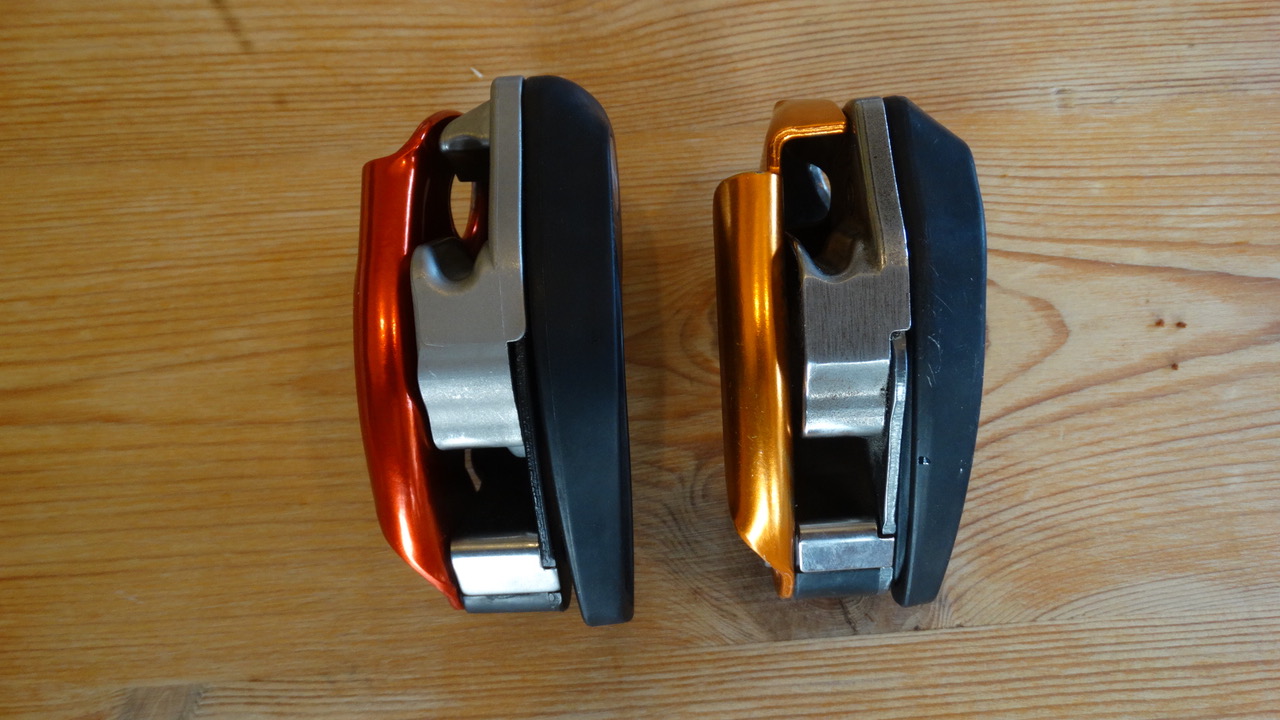
On the left: red (current). On the right: orange (previous) model of the Petzl Grigri.
Differences In Use
Much as with a quality music album you learn to love, first impressions weren’t great. The larger hole seemed to rattle incessantly and annoyed me, and try as I might, I kept catching my finger on the extended handle which protrudes ever-so-slightly more than the 2.
That was until I had to lower someone much heavier than myself and almost instantly, my opinion changed. The changes have resulted in a device which is smoother and easier to operate than ever before. That marginal extra length has made a massive difference and the improved geometry (I haven’t measured this but it certainly looks different) have made a tool I’ve been using for nearly twenty years the best yet.
Paying out slack now seems easier too, and Petzl’s claim that the device offers progressive control is not unfounded, certainly giving more of “a smooth and comfortable descent” than any of the previous incarnations. This goes for top ropes to lead alike, and from light children to heavy powerhouses. Indeed, it is with the larger climbers that it is even more noticeable.

Tom Livingstone trusting his belayer, who happens to be using a Petzl GRIGRI! La Mala (8b), Chulilla. Photo: Uisdean Hawthorn
Should I Upgrade?
While I’m more than happy to wax poetic about the new one, and there’s no doubt to me that it is an improvement, the fact is, it’s not enough of an improvement to warrant ditching your old one before it’s time is up. If I lost my new GRIGRI, and still had my old one for personal climbing, would I go buy another? No, to be honest, I’d make do and probably not feel too maudlin about it.
However, if I lost both, and had a choice of which one to buy to replace, (even with the price differences you may find, now with old stocks being flushed out of shops), I’d get the new one every time. I suspect the old one will now be resigned to my 'GRIGRI predecessor' collection.

The complete Grigri family - 30 years old in 2021!
More information about the current model GRIGRI can be found here. The GRIGRI+, a very different model and not covered in this comparison, is found here.
Prowess Coaching, run by Pete Edwards, can be found online or on Facebook. Pete has also written a guest article on 3D climbing films here.

